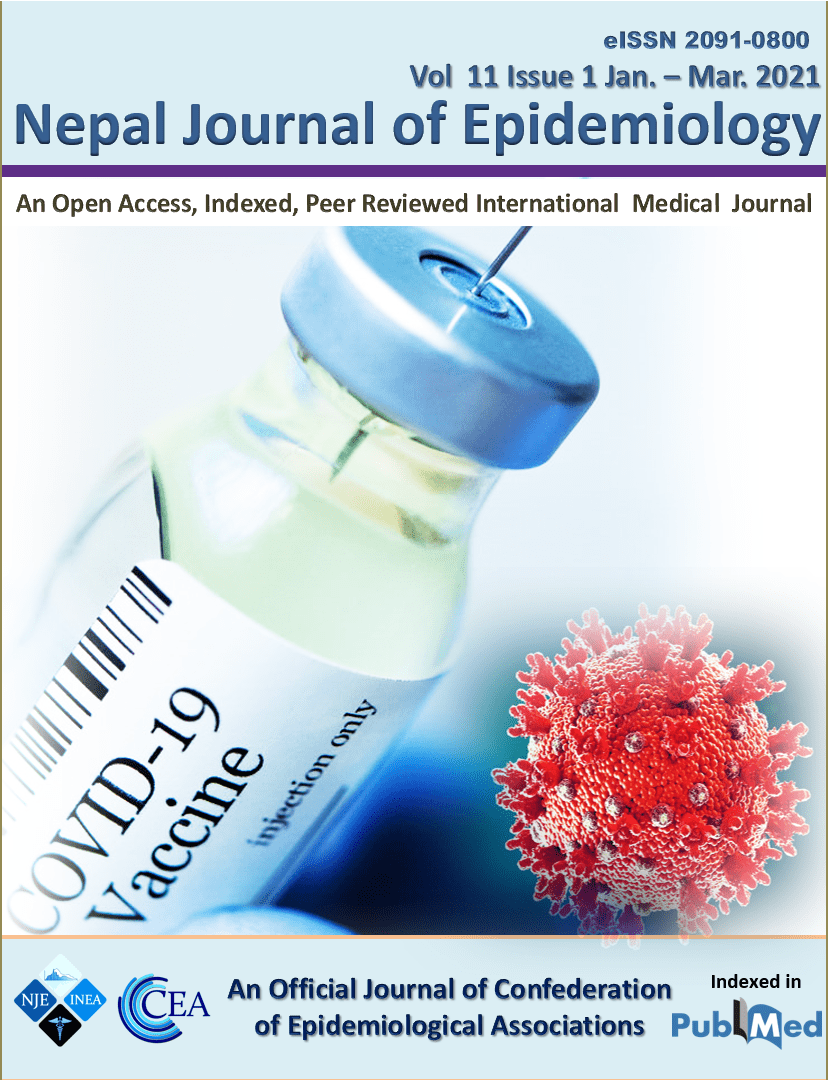COVID-19 and mutations a threat level assessment
DOI:
https://doi.org/10.3126/nje.v11i1.35659Keywords:
COVID-19 Virus variants, Genetic Variation, SARS-CoV-2 B.1.351, SARS-CoV-2 B.1.1.7 variant, SARS-CoV-2 P.1, SARS-CoV-2 variantsAbstract
A mutation is defined as an alteration in the DNA or RNA sequences of a genome which may consequently confer a new phenotypic and or genotypic advantage both increasing the virulence as well as the survival of a virus or pathogen. At this current point in time there are 4 known major variants of the original SARS-CoV-2 virus, namely the English variant, the South African variant, the Brazilian variant and a variant similar to that of the South African variant found in North America, all of which have varying levels of resistance and infectivity. It is evident that the SARS-CoV-2 variants pose an international health risk, the mutations of E484K and N501Y are the two most implicated mutations. E484K being the most concerning as it aids in immune evasion and drastically causes the efficacy of the current vaccines to be reduced by large margins. The most worrisome variant is the South African or B.1.351 which harbors the above mutations. it is of the upmost importance that targeted vaccines are synthesized to ensure the that immunized individuals have effective protection against these variants. Until these specific targeted vaccines are synthesized the current vaccines offer little long-term protection, however do confer a level of immunity to stop severe infections. It is thus advised that current vaccination programs should continue in earnest as a degree of protection is conferred.
Downloads
Downloads
Published
How to Cite
Issue
Section
License
- Upon acceptance Copyright on any research article is transferred in full to the Confederation of Epidemiological Associations (CEA) and International Nepal Epidemiological Association (INEA). The copyright transfer includes the right to reproduce and distribute the article in any form of reproduction (printing, electronic media or any other form).
- Articles in the Nepal Journal of Epidemiology are Open Access articles published under the Creative Commons CC BY License (https://creativecommons.org/licenses/by/4.0/)
- This license permits use, distribution and reproduction in any medium, provided the original work is properly cited.

